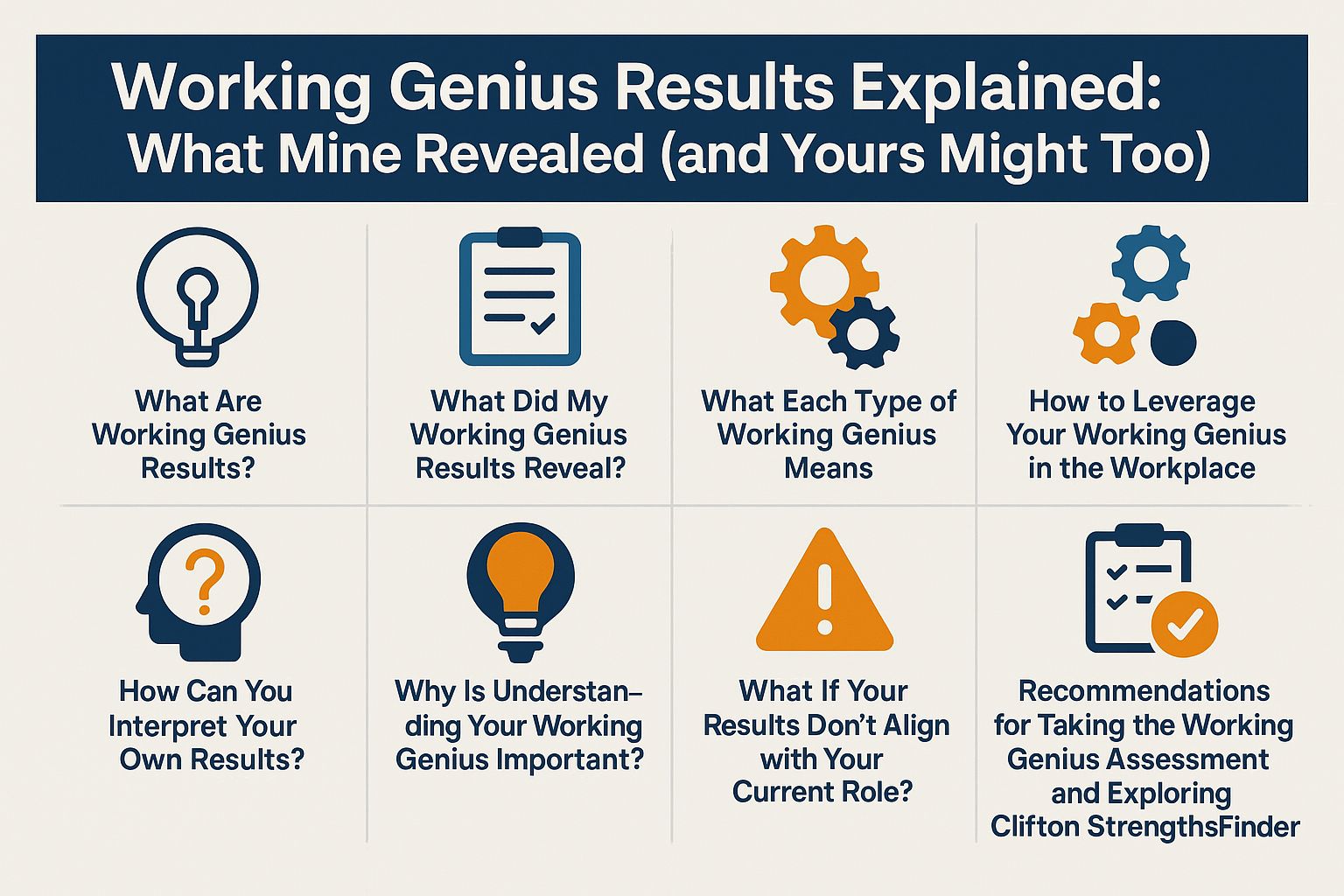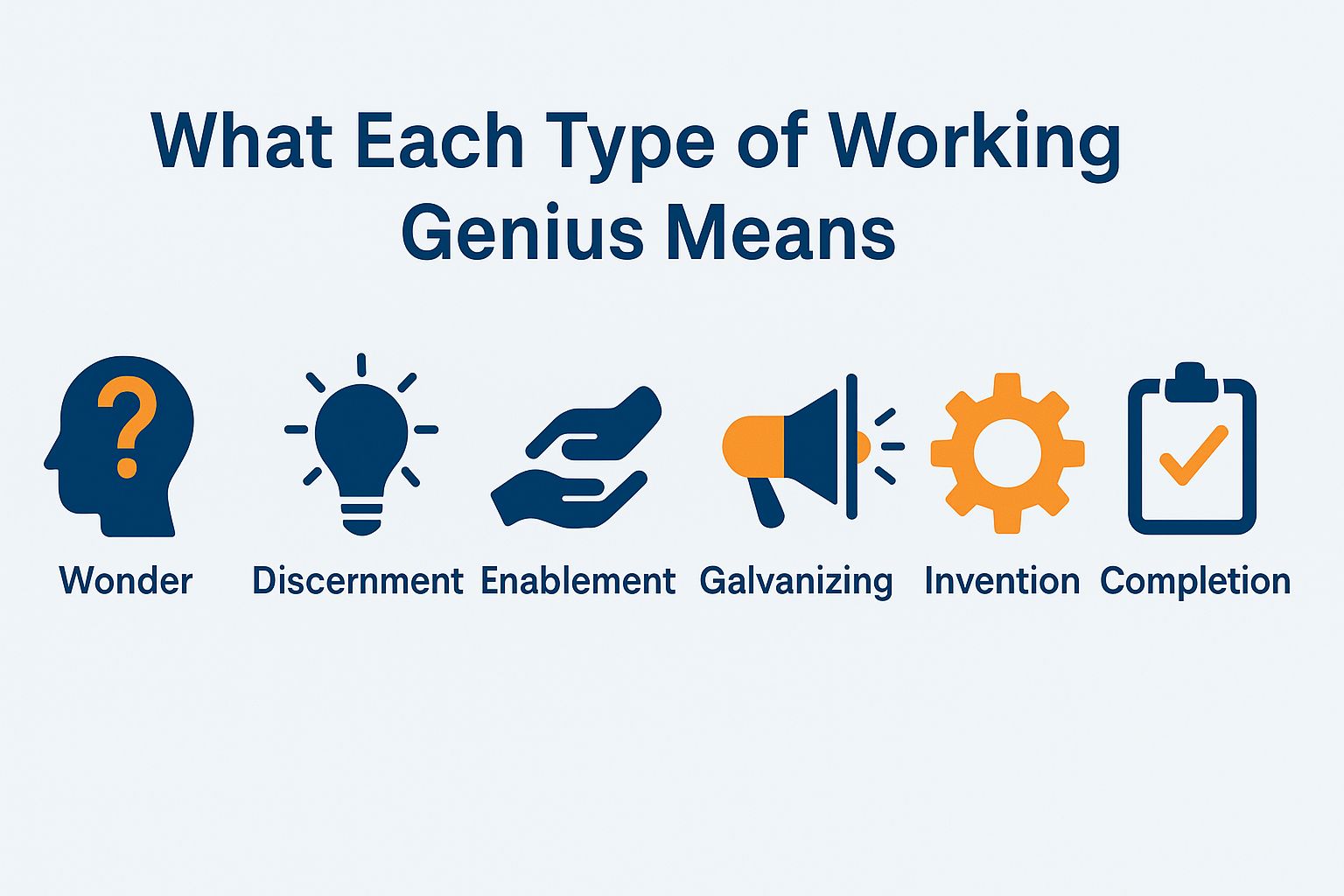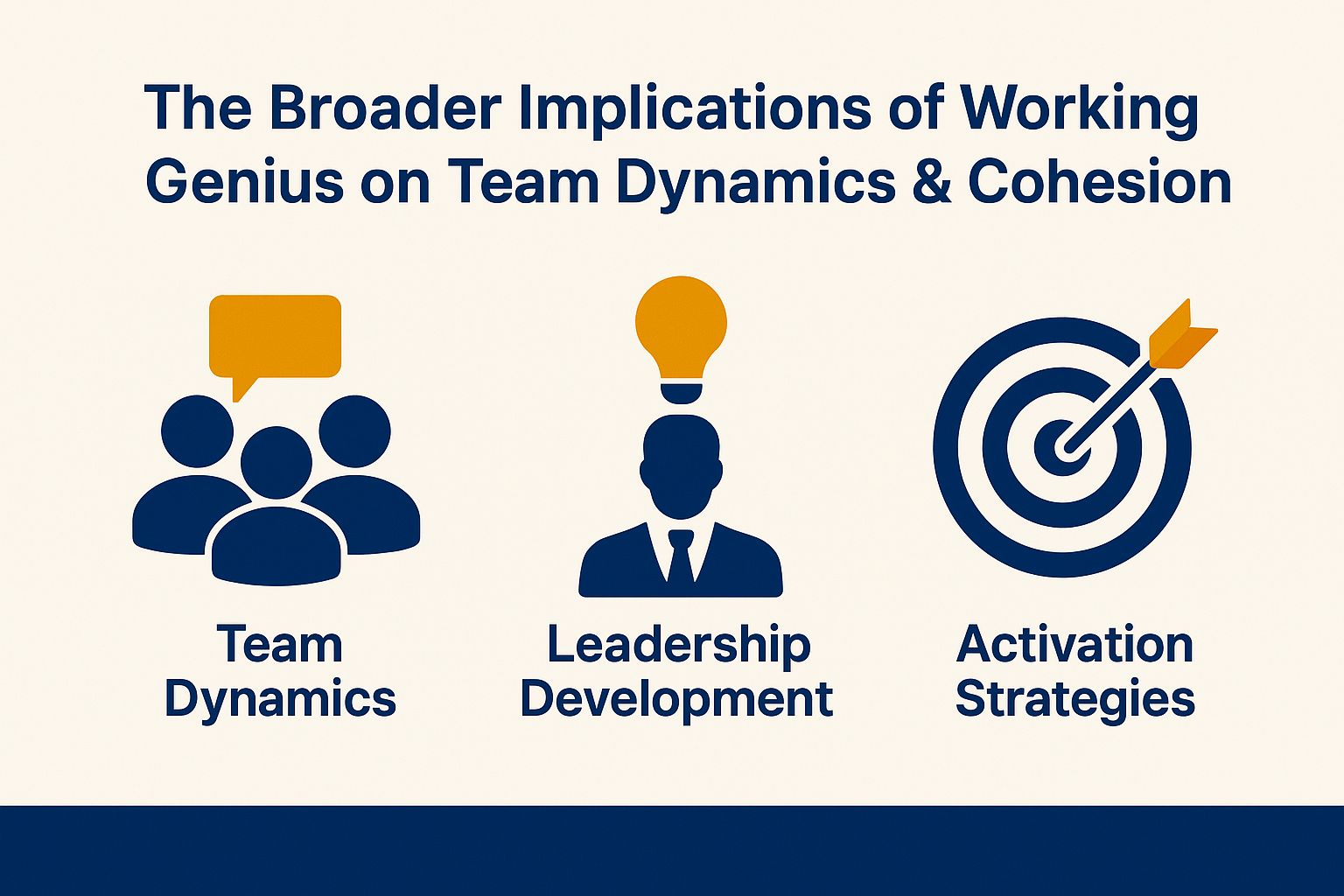
Do team dynamics feel chaotic? Let’s find cohesion. As someone who explored my Working Genius results, I discovered valuable insights that clarified my strengths and showed how to boost team effectiveness. In this article, I’ll share my results. Understanding your Working Genius, created by Patrick Lencioni, can transform your approach much like Clifton StrengthsFinder. Let’s delve into the profound impact this assessment can have on your personal and professional growth.
Key Takeaways:Understand the concept of Working Genius and how it can help you identify your unique strengths and weaknesses in the workplace.Take the time to analyze your own Working Genius results and use them to improve team collaboration and personal development.Consider taking the Working Genius assessment to gain valuable insights and potentially align your strengths with a more fulfilling job role.
Understanding Working Genius Results
The Working Genius results provide a clear framework for my strengths and weaknesses at work.
Developed by Patrick Lencioni, this approach really helps improve team dynamics and supports my personal development.
Understanding the Concept of Working Genius
The Working Genius model really breaks things down by categorizing people into six types based on their natural talents in work-related tasks. It’s a great way to clarify team roles and dynamics.
These types are: Wonder, Discernment, Completion, Enablement, Galvanization, and Invention. Each person’s unique mix of these types really influences how they contribute to tasks and collaborate with others.
For instance, if I have a team member who shines in Wonder, they’re likely to be great at spotting problems. On the other hand, someone who excels in Galvanization can really get everyone fired up to take action.
Understanding these dynamics improves communication and boosts team culture. It encourages accountability and lets everyone recognize each other’s strengths, enhancing team culture and communication skills. Matching tasks with team members’ genius types boosts productivity and morale. It creates a cohesive work environment that supports individual and team development.
My Working Genius Results
My Working Genius assessment showed that my top strengths are in the Genius of Discernment and the Genius of Enablement.
This means I have a real knack for guiding and supporting ideas throughout their entire lifecycle.
A Personal Overview of My Results
The Genius of Discernment really helps me evaluate ideas critically, and the Genius of Enablement lets me support my colleagues effectively as we push projects forward. This combination boosts team collaboration.
For instance, during brainstorming sessions, I use my critical analysis to pinpoint the best ideas while also making sure to encourage everyone’s contributions.
I love using collaborative tools like Miro for visual brainstorming and Trello for task management to keep everyone on the same page, which enhances strategic collaboration and reduces burnout. Scheduling regular feedback loops creates a culture of continuous improvement. This leads to innovative solutions and better project outcomes.
By balancing discernment with enablement, I’ve managed to create an environment where both critical thinking and support can really flourish, which enhances team effectiveness and aids in work-life integration.
Understanding Each Working Genius Type
The Working Genius framework includes six different types that play a role in team processes: Wonder, Discernment, Galvanizing, Enablement, Invention, and Tenacity.
Each type brings something unique, making teamwork effective and dynamic.

The Six Types Explained: Wonder, Discernment, Completion, Enablement, Galvanization, and Invention
Each type of Working Genius has its own important role in the mix. I’ve noticed that Wonder sparks our curiosity, Discernment helps us make effective decisions, Galvanizing gets everyone inspired to take action, Enablement supports the execution of tasks, Invention drives our creativity, and Tenacity makes sure we see everything through to the end.
To harness these types in a team, we should apply our strengths.
- For example, if I have the Wonder genius, I can kick off brainstorming sessions to explore fresh ideas.
- Those of us with Discernment can step in to evaluate those ideas, helping the team focus on what’s actually feasible.
- If someone is a Galvanizer, they can take charge of rallying more team members to buy into the project, while an Enabler can help with resource allocation to keep things running smoothly.
- And let’s not forget the team members with Tenacity-they’re the ones who keep the project on track, making sure deadlines are met and goals are achieved.
Interpreting Your Results
When I look at my Working Genius results, I don’t just focus on my top strengths. I also take a moment to see how they all interact and shape my work style, as well as how I can contribute to the effectiveness of my team.
Seeing the bigger picture is valuable!
Steps for Analyzing Your Working Genius Profile
To analyze my Working Genius profile, I start by checking out my results, pinpointing my strengths and weaknesses, and reflecting on my past work experiences. Then, I like to gather feedback from colleagues or mentors who have seen how I work.
I ask them to share specific examples that highlight what I do well and where I could improve.
For a more organized approach, I create a simple two-column table: I list my strengths on one side and my areas for growth on the other. This makes it easier to see where the gaps are.
From there, I come up with an action plan that includes specific steps. I set one goal each month to either work on a weakness or to leverage a strength, making sure I track my progress along the way.
Importance of Understanding Working Genius
Understanding my Working Genius is key to boosting my personal development and making my team more effective through better communication and collaboration.
By figuring out what my Working Genius is, I can gain valuable insights into my strengths and the areas where I might face some challenges.
For instance, if I’m great at ‘Wonder’ but not so much with ‘Completion,’ I can focus on brainstorming creative ideas while teaming up with someone who excels at getting things done.
This approach aligns team roles with individual strengths. It reduces burnout and increases job satisfaction.
Using tools like the Working Genius assessment can really simplify this whole process, allowing me to maximize my productivity while creating a more supportive work environment.
Using Your Working Genius at Work
I’ve found that leveraging my Working Genius at work really boosts team collaboration and makes project management a whole lot smoother. Utilizing the Working Genius Team Toolkit for better team energy mapping.
It’s amazing how aligning tasks with everyone’s individual strengths can lead to better outcomes all around, reducing burnout and promoting work-life integration.
Practical Ways to Collaborate
Using Working Genius insights has really changed the game for how my team collaborates. It’s all about making sure that the tasks we tackle fit each person’s strengths and preferences.
I start by assigning roles based on each member’s genius type. For instance, those who have the “Wonder” genius can take the lead in brainstorming sessions, while the “Completion” geniuses are perfect for wrapping up projects.
I also make it a point to foster open communication by holding regular check-ins where we can share our strengths and challenges. Creating customized workflows is key. Tools like Asana or Trello help match tasks with the right team members.
Over time, I’ve noticed that this alignment really boosts both productivity and morale, fostering innovation and creative solutions.
Impact of Working Genius on Personal Development
I find that Working Genius results can really make a difference in my personal development. They point out areas where I can grow and help me make smarter career planning decisions.
Using Insights for Growth and Career Planning
My Working Genius results provide insights for career development and growth. To make the most of these insights, I seek mentorship from colleagues excelling in my strong areas.
It’s a great way to get practical advice, build skills, and motivate others.
I also look for training programs that align with my strengths. For instance, if I find I excel in ‘Wonder,’ I seek innovation workshops to deepen my skills.
When I’m on the job hunt, I focus on roles that complement my unique talents. If I thrive in ‘Completion,’ I specifically look for positions that emphasize task execution and follow-through. This targeted approach has definitely led me to more fulfilling career opportunities.
Bridging Question: What If My Results Don’t Match My Role?
If my results don’t match my role, I need to rethink my responsibilities or find new opportunities that better align with my strengths.
The first thing I’d do is have an open chat with my supervisor about my results. I’d point out the specific areas where I feel like there’s a mismatch and ask for their feedback on my performance and where I might fit better within the organization.
I’d also consider exploring training or mentorship programs to build skills that align with my Working Genius. It makes sense to check out roles that resonate more with what I’m good at; for instance, if I shine in Wonder, I might want to look into strategy or innovation positions.
Taking this proactive approach, as outlined in the Six Types of Working Genius framework by Patrick Lencioni, not only boosts my job satisfaction but also sets me up for even greater success down the line.
Recommendations for the Assessment
I find that taking the Working Genius assessment can really be a worthwhile investment, whether for individuals or organizations aiming to boost team effectiveness, improve overall organizational health, and complement tools like the Enneagram and Clifton StrengthsFinder.
Is It Worth Your Time and Investment?
Investing time and effort into the Working Genius assessment really pays off in terms of improving team collaboration, organizational health, and boosting individual self-awareness-it’s definitely worth it.
I’ve seen organizations that embrace this assessment report impressive returns on their investment. For example, I remember a tech company that experienced a 30% increase in project efficiency after going through the assessment.
After the assessment, team members gained a clearer understanding of their strengths, which helped optimize their roles. One participant even shared, “Understanding my Genius helped me contribute more effectively, fostering stronger partnerships.”
Over time, these insights really enhance personal growth and team dynamics, creating a more engaged and productive work environment.
Broader Implications of Working Genius
I’ve noticed that the broader implications of Working Genius go way beyond just individual assessments. It really affects team dynamics and how organizations approach leadership development strategies.

How Working Genius Fits into Team Dynamics, Leadership Development, and Activation Strategies
Integrating Working Genius into our team dynamics and leadership development really helps create a culture that values personal strengths and encourages high-performance teams.
For instance, at my tech startup, when we started using the Working Genius framework, collaboration took off. Team members were able to pinpoint their individual geniuses, like the Genius of Wonder or Genius of Completion.
Having that clarity made it so much easier to delegate tasks, allowing everyone to play to their strengths. We even held leadership workshops focused on these geniuses, which really enhanced communication and trust among us all.
The result? Not only did we see an improvement in project outcomes, but we also built a more cohesive and supportive team culture that fostered leadership growth at every level.
Frequently Asked Questions about Working Genius
What are Working Genius Results?
Working Genius results help you understand your natural talents. By identifying your strengths, you can use them to your advantage in your career and personal life.
What Did My Results Reveal?
I have a talent for discernment and galvanizing others. I’m less skilled in enablement and tenacity, which helps me understand my effectiveness and areas for improvement.
What Is Talent for Discernment?
Talent for discernment means making quick, accurate judgments. This skill helps in decision-making and problem-solving.
What Is Talent for Galvanizing Others?
A talent for galvanizing others means inspiring and motivating those around me. This skill is valuable in leadership, helping me unite people toward a common goal.
How Can I Improve My Weaknesses?
Understanding weaknesses is the first step to improvement. I can seek opportunities to practice enablement and tenacity, and get guidance from those who excel in these areas.
Should I Take the Working Genius Assessment?
I recommend taking the Working Genius assessment for valuable insights into your talents. It helps you understand your effectiveness in your career and personal life, and guides you on improving weaknesses.